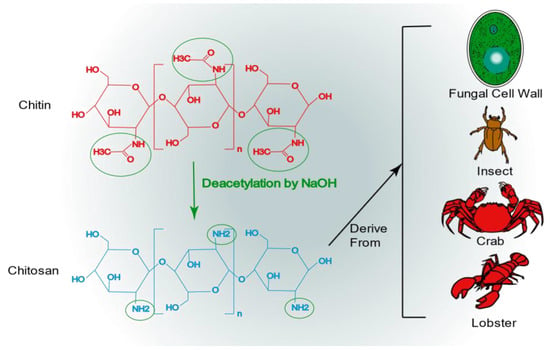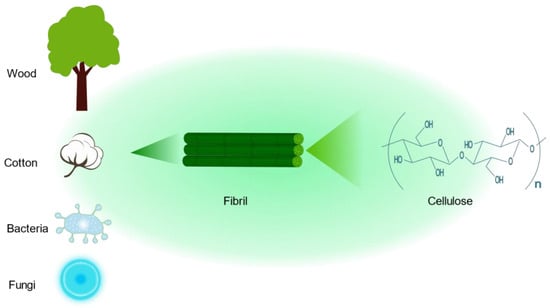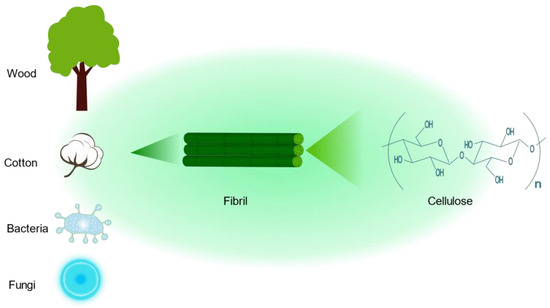Kidney disease has become a serious public health problem throughout the world, and its treatment and management constitute a huge global economic burden. Currently, the main clinical treatments are not sufficient to cure kidney diseases. During its development, nanotechnology has shown unprecedented potential for application to kidney diseases. However, nanotechnology has disadvantages such as high cost and poor bioavailability. In contrast, biopolymers are not only widely available but also highly bioavailable. Therefore, biopolymer-based nanosystems offer new promising solutions for the treatment of kidney diseases. This paper reviews the biopolymer-based nanosystems that have been used for renal diseases and describes strategies for the specific, targeted delivery of drugs to the kidney as well as the physicochemical properties of the nanoparticles that affect the targeting success.
- nanoparticles
- biopolymer
- drug delivery systems
- kidney
- chitosan
- cellulose
- alginate
1. Introduction
2. Chitosan
Chitosan is a highly abundant natural biopolymer derived from the exoskeletons of crustaceans such as lobsters and crabs, insects, and fungal cell walls [10][80]. Chitosan is a polysaccharide formed through the deacetylation of chitin, and its chemical structure consists of N-acetylglucosamine and D-glucosamine monomers (Figure 1Figure 4). Chitosan’s molecular formula is C6H11NO4X2. Chitosan is formed after the N-deacetylation of chitin in reaction with a concentrated NaOH solution [11][81]. After deacetylation, as compared to chitin, chitosan acquires a higher water solubility and better chemical potential due to the free amino group [12][82]. The amino group on the surface of chitosan results in its positive charge [7][42]. This is of great interest for drug delivery to the kidney, as positively charged substances are more easily transported across the glomerular filtration barrier [13][63]. With continuous technological progress, the third generation of chitosan was introduced in the form of chitosan oligosaccharides, and chitosan became a designable bioactive compound, which greatly enhanced its application prospects [14][83]. At present, chitosan has a wide range of applications, including not only antibacterial, antitumor, and antioxidant applications [15][16][17][84–86] but also drug delivery, especially in its nanoform [18][19][20][87–89]. Chitosan nanoparticles are easy to produce, have a low toxicity, and are highly stable, biocompatible, and biodegradable. In addition, chitosan nanoparticles can release their encapsulated chemicals in a controlled manner [21][90]. As previously mentioned, chitosan with a low molecular weight can be selectively absorbed by megalin receptors in the kidney. Consequently, both chitosan nanoparticles and hybridized nanoparticles containing chitosan are effectively and selectively distributed in the kidney. All these advantages make chitosan nanoparticles an excellent vehicle for drug delivery to the kidney.

The chemical structure of chitosan and its origin.
Nanozymes are a focal topic of current research. Nanozymes are nanomaterials with an enzyme-like activity that have effective catalytic activity and a specific mechanism for a given reaction [25][96]. Z. Liu et al. [26][97] designed an ultra-small nanoenzyme for the treatment of AKI, and they successfully synthesized the nanoenzyme with an average particle size of 2 nm using chitosan, ruthenium(III) chloride trihydrate, and acetic acid with a solvothermal method. In addition, the nanoenzyme possesses multien-zyme-like activity (superoxide dismutase (SOD), catalase (CAT), and glutathione peroxidase (GPx)) and acts as an antioxidant to effectively scavenge ROS in kidney cells for the treatment of AKI. The excellent antioxidant properties, biostability, biocompatibility, and renal accumulation of this nanoenzyme make it promising for further applications in other kidney diseases caused by ROS, such as diabetic kidney disease.
3. Cellulose
Cellulose is by far the most abundant, most common, and renewable natural biopolymer, which is derived from wood, cotton, bacteria, and fungi [27][28][98,99]. Cellulose is a polysaccharide with a linear structure consisting of multiple D-glucose units linked by β-1,4 glycosidic bonds (Figure 2Figure 5) [29][100]. The cellulose molecular formula is (C6H10O5)n. Cellulose has a highly biocompatible and biodegradable nature, making it non-toxic [30][101]. Although cellulose is insoluble in water, which may limit its application in drug delivery, a series of cellulose derivatives can be formed through specific chemical reactions to improve its water solubility [31][102]. There are crystalline and amorphous regions in cellulose, and nanocrystalline cellulose is pure cellulose in a crystalline form with nanoscale dimensions [32][103]. The preparation methods of nanocrystalline cellulose mainly include acid hydrolysis, esterification using concentrated organic acids, (2,2,6,6-tetramethylpiperidin-1-yl)oxidanyl(TEMPO)-mediated oxidation, microbial or enzymatic hydrolysis, and periodate oxidation [33][104]. Nanocrystalline cellulose is a rod-shaped particle with an excellent aspect ratio, with a width of approximately 5–30 nm and a length of approximately 100–500 nm [34][105]. It also has superior axial Young’s modulus, high specific surface area, high transparency, and a number of other excellent properties, References [35][36][106,107]. As a result, nanocrystalline cellulose is widely used not only in drug delivery but also in many fields, such as papermaking, food production, and electronics [37][38][39][108–110]. In the kidney, nanocrystalline cellulose with a high aspect ratio (>10) is aligned with blood flow, filtered through the glomerulus, and subsequently reabsorbed by the renal unit from the tubular border. Due to the pharmacokinetic profile of the delivery platform, drugs bound to nanocrystalline cellulose are delivered to renal tubular cells [40][111]. Therefore, nanocrystalline cellulose has tremendous potential for renal drug delivery.

The chemical structure of cellulose and its sources.
There are a large number of extensive studies on the synthesis, characterization, and biological interactions of cellulose nanocrystals, as well as the successful loading of various hydrophobic drugs. However, there are few studies on the use of these drugs for the treatment of renal diseases [49][50][120,121]. For example, curcumin, a polyphenolic compound with antioxidant properties, can be incorporated into cellulose nanocrystals modified with the cationic surfactant cetyltrimethylammonium bromide to bind a large amount of curcumin, and the amount of curcumin added ranges from 80% to 96% [51][122]. Moreover, curcumin, as an antioxidant, has great application in alleviating oxidative stress, such as diabetic nephropathy and AKI [52][53][123,124]. Therefore, cellulose nanocrystals with certain modifications have great potential and innovative applications in the treatment of kidney diseases.
4. Alginate
Brown algae are the largest group of marine macroalgae, and alginates are the most abundant natural marine polymers derived from brown algae [54][125]. Alginate is a non-branched polysaccharide consisting of (1,4) linked β-D-mannuronic acid (M) and α-L-guluronic acid (G) in a non-repeating block. It consists of M residues and G residues that form M blocks or G blocks, respectively, or alternately, both form MG blocks (Figure 3Figure 6) [55][126]. Alginate has a wide range of applications, from textile and food technology to biomedical and chemical engineering [56][57][58][127–129]. It has important applications in wound dressings; when applied to wounds, it forms a protective gel layer that promotes wound healing and tissue regeneration and maintains a stable temperature. In addition, alginate has applications in drug delivery due to its variable density and fiber composition, which make it easy to control the rate of drug release [59][130]. In addition, alginate can be easily manipulated through the simple addition of crosslinking agents, such as divalent calcium ions, for the development of different formulations of carriers [60][131]. Among the various alginate formulations, alginate microspheres have been extensively studied for their ability to encapsulate molecules with different properties. It is worth noting that alginate itself has no renal-targeting properties. However, due to the presence of open-function M and G groups, it can react with other cationic polymers, such as chitosan, thus achieving renal targeting ability and the encapsulation of drugs [61][132].
